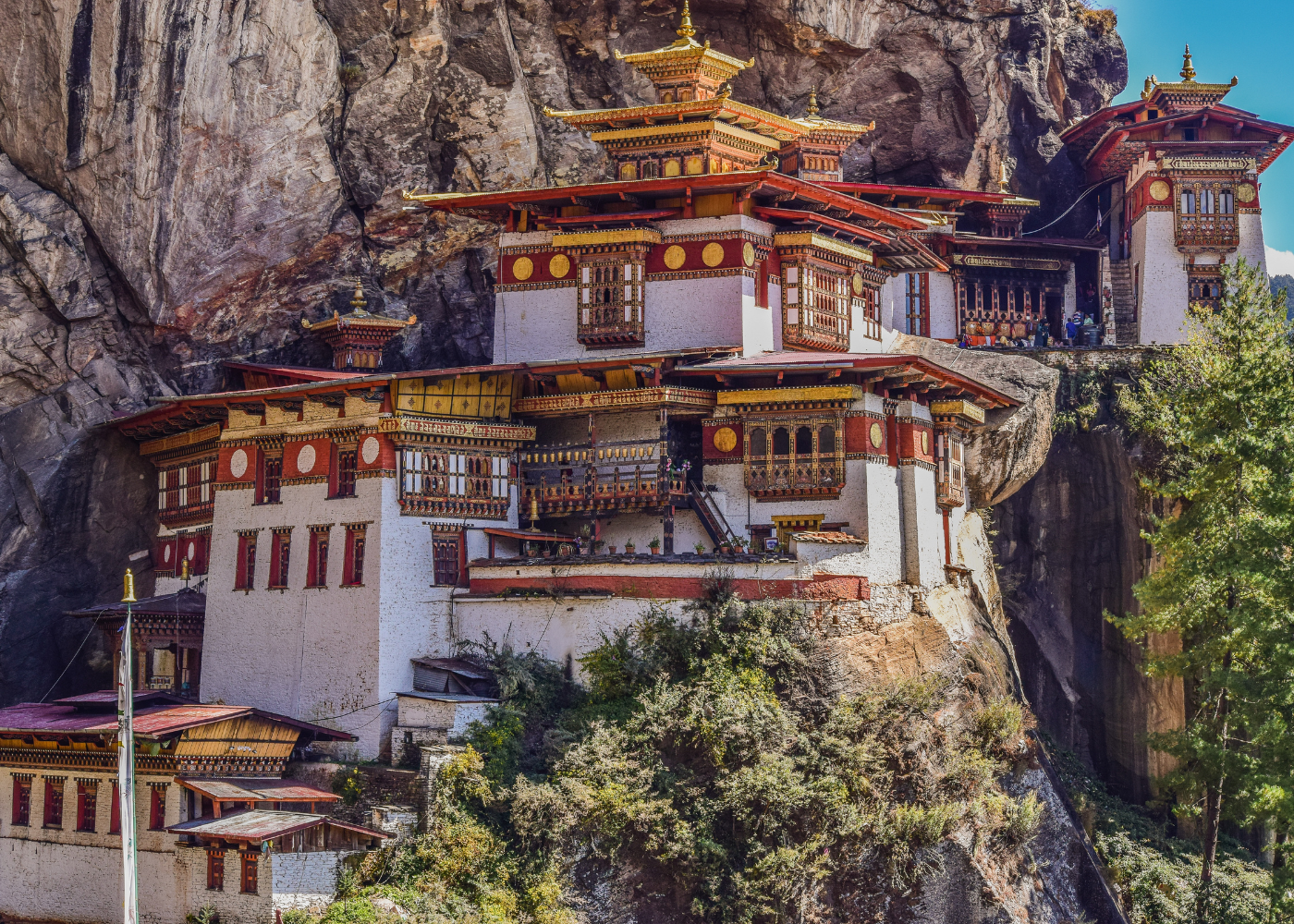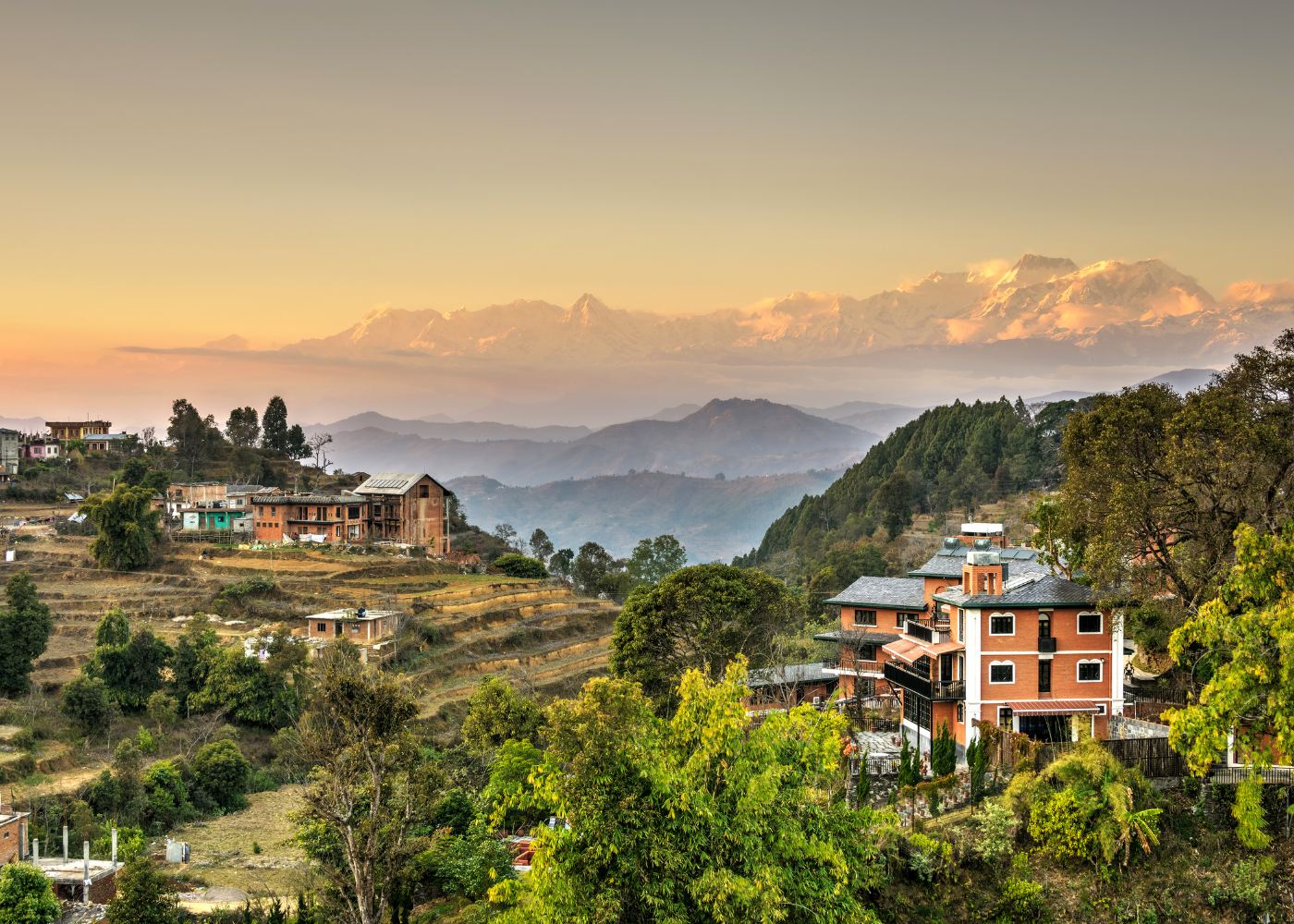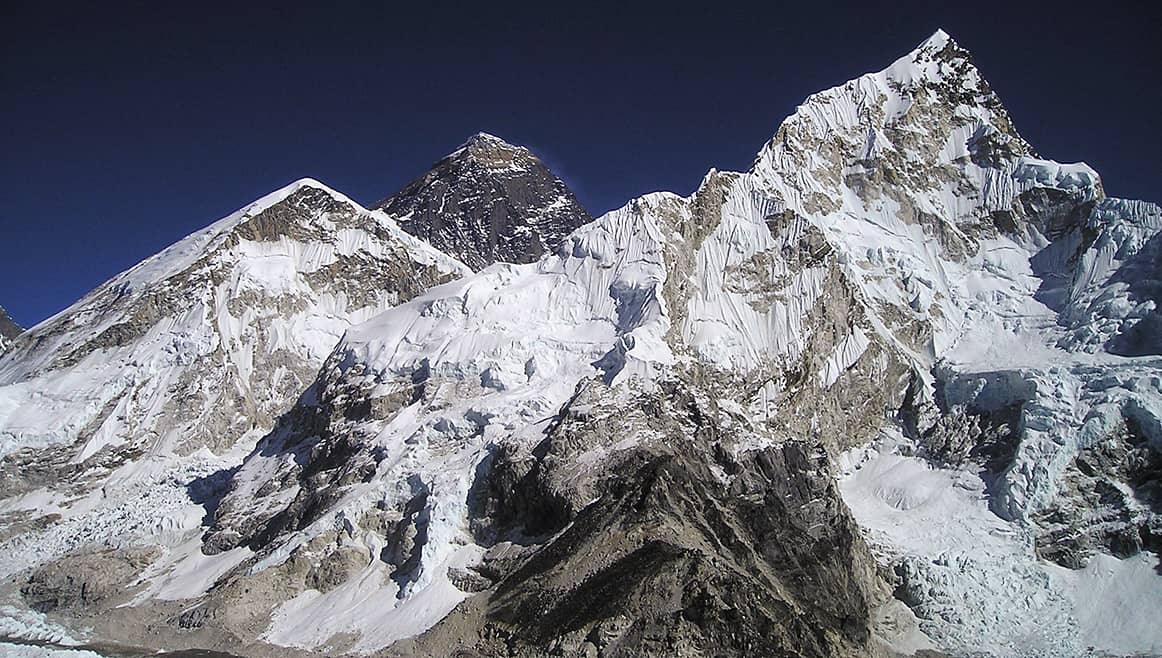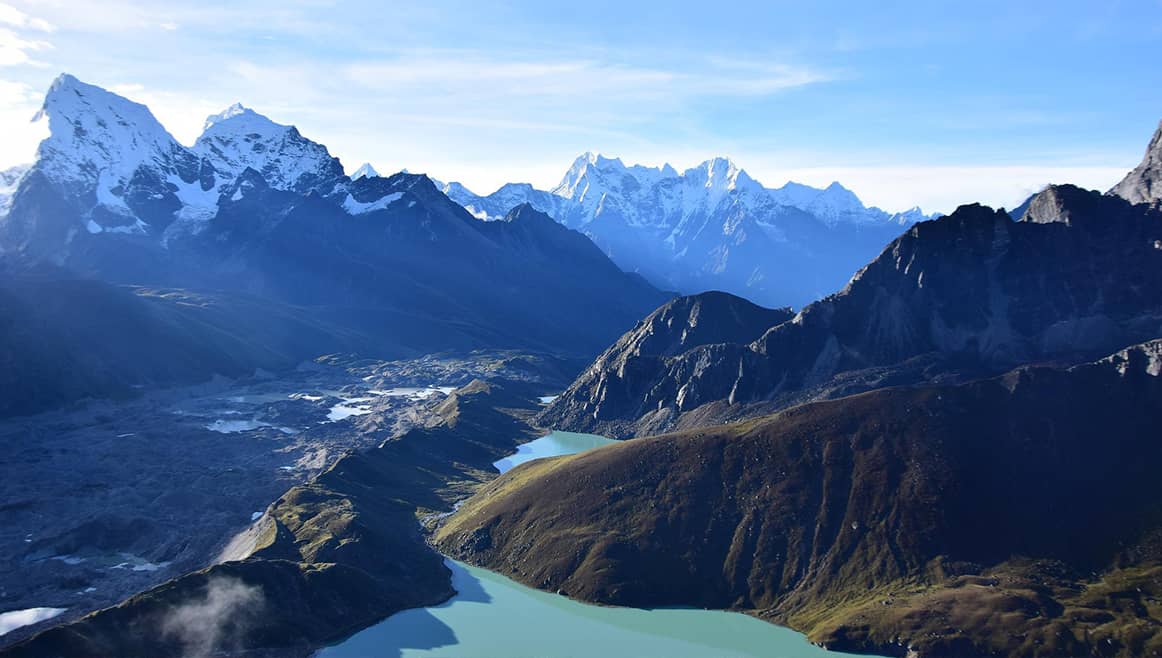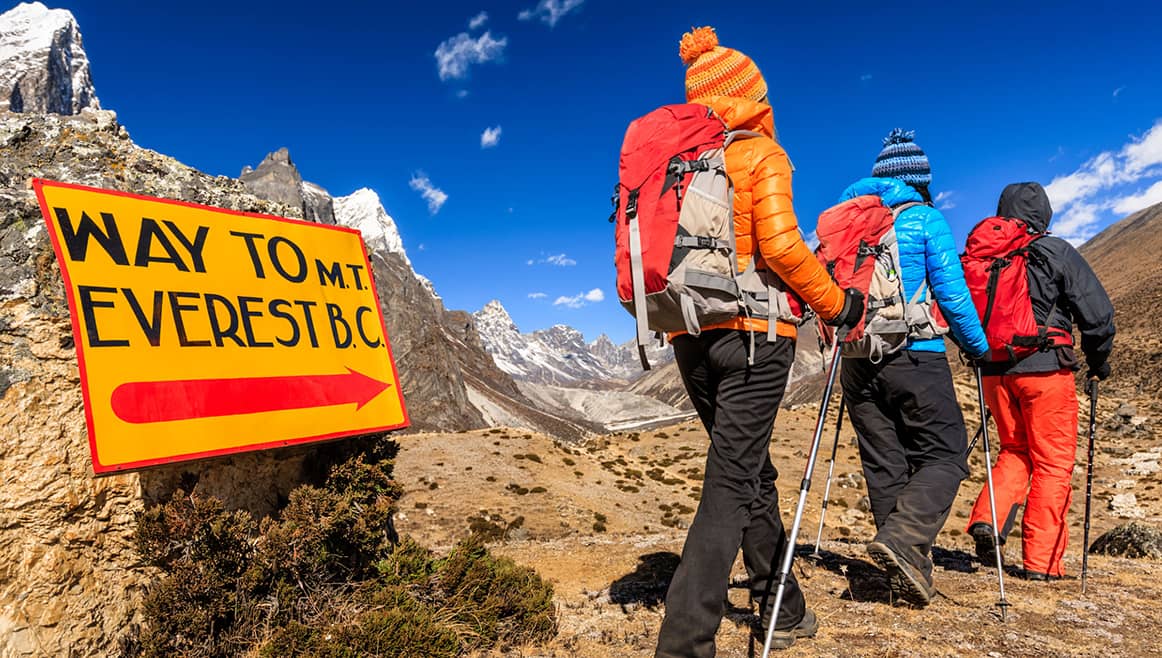- [email protected]
- Hattisar, Kathmandu, Nepal



About Nepal
Nepal Information: A Guide to the Richness of Nepal’s Biodiversity
Nepal, a country situated between China in the north and India in the south, east, and west, is a treasure trove of bio-diversity owing to its unique geographical position and altitudinal variation. From its lowest point, 60 meters above sea level, to the highest point on Earth, Mount Everest at an astounding 8,848 meters, Nepal offers a wide range of elevations within a distance of just 150 kilometers. This diversity in altitude creates a myriad of climatic conditions, ranging from sub-tropical to Arctic.
Exploring Nepal’s Geographical Features
Nepal covers an area of approximately 147,181 square kilometers, making it a relatively small country in terms of landmass. However, its compact size does not diminish its natural beauty. The country’s capital city is Kathmandu, a vibrant and culturally rich hub that serves as a gateway to Nepal’s wonders. With a population of around 23 million people, Nepal is home to a diverse range of ethnic groups, each with its own local dialects.
Climate and Seasonal Variation
Nepal experiences a typical monsoonal climate with two distinct seasons throughout the year. The dry season lasts from October to May, while the wet season, known as the monsoon, spans from June to September. However, the period between September and November, which marks the beginning of the dry season, is often considered the best time to visit Nepal. During this time, the countryside is lush and green after the monsoon rains, and the weather is generally pleasant. Additionally, this season coincides with several colorful festivals, adding to the vibrancy of the country.
To give you an idea of the temperature ranges in Nepal’s capital, Kathmandu, here are the average temperatures during different seasons:
Autumn (September-November): Maximum temperatures range from 20 to 28 degrees Celsius, while minimum temperatures range from 5 to 10 degrees Celsius.
Winter (December-February): Maximum temperatures range from 15 to 20 degrees Celsius, while minimum temperatures range from 1 to 5 degrees Celsius.
Spring (March-May): Maximum temperatures range from 25 to 30 degrees Celsius, while minimum temperatures range from 8 to 15 degrees Celsius.
Summer (June-August): Maximum temperatures range from 29 to 32 degrees Celsius, while minimum temperatures range from 18 to 22 degrees Celsius.
Cultural Harmony and Religious Diversity
Nepal embraces its multicultural and multi-religious heritage with pride. It is a secular state, with the majority of the population following Hinduism and Buddhism. Hindu temples and Buddhist shrines can be found scattered throughout the country, reflecting the harmonious coexistence of these two major religions. In fact, Nepal is renowned as the birthplace of Lord Buddha, the revered figure who is considered the light of Asia. Alongside Hindus and Buddhists, there are also Muslim, Christian, and nature-worshiping communities in Nepal, further enriching its religious landscape.=
Currency and Practical Information
The currency of Nepal is the Nepali Rupee (NPR), available in various denominations ranging from Rs. 1 to Rs. 1000. Visitors are advised to exchange their foreign currency only through banks or authorized money exchangers. It is essential to obtain receipts for such transactions. Upon arrival at the airport, visitors can conveniently exchange their foreign currency at the designated counters. However, it’s important to note that Indian currency in the denominations of Rs. 500 and Rs. 1000 is not accepted in Nepal.
Banks in Nepal operate between 10 am to 3 pm from Sunday to Friday in the Kathmandu Valley, with some banks open for the entire week. Additionally, ATM machines are widely available throughout the Valley, offering easy access to cash.
Political System and Official Working Hours
Nepal operates under a Federal Democratic Republic system of governance. The official working hours for government offices are from 10 am to 5 pm during summer and from 10 am to 4 pm during winter. Saturdays are considered the weekend holiday across the country, with most government and private businesses closed on this day. However, private companies and business stores generally open from 9 am to 7 pm.
Accommodation, Post Offices, and More
Nepal offers a wide range of accommodation options to suit every traveler’s needs. From internationally renowned star hotels to budget-friendly hotels and lodges, the country ensures that visitors have a comfortable stay. To ensure the quality of service, it is advisable to choose government-registered hotels, lodges, travel agencies, and licensed tour and trekking guides.
For any postal services, the Central Post Office in Kathmandu, located near Bhimsen Tower, is open from 10 am to 5 pm from Sunday through Friday. The counters operate from 7 am to 5 pm and provide various postal services such as stamps, postcards, and aerograms. Additionally, express mail services are available at the General Post Office (GPO) as well as at counters in Thamel, Basantapur, and the airport.
Traveling to Nepal: Access and Visa Information
By Air:
Nepal Airlines, the national flag carrier of Nepal, offers flights to and from various international destinations, including Delhi, Bangalore, Mumbai, Kuala Lumpur, Dubai, Bangkok, Hong Kong, Osaka, Shanghai, and Singapore. Additionally, several other international airlines operate flights to Kathmandu, such as Austrian Airlines, Air China, Thai Airways, Qatar Airways, Gulf Air, Fly Dubai, Indian Airlines, Jet Airways, PIA, Royal Druk, Biman Bangladesh, Cosmic Air, and China Southern, among others.
By Land:
Travelers entering Nepal by land must use designated entry points. These entry points include Kakarbhitta, Birgunj, Belhiya (Bhairahawa), Nepalgunj, Dhangadi, Mahendranagar, and Kodari. It is important to note that visitors entering Nepal with their vehicles must possess an international carnet or complete the necessary customs formalities.
Visa Requirements and Regulations
For most visitors to Nepal, a tourist visa is required. Tourists can obtain their visas from Nepal’s embassies, consulates, or mission offices abroad, as well as at immigration offices located at various entry points within the country. The duration and fees for tourist visas are as follows:
Multiple entry, 15 days: USD 30 or equivalent convertible currency
Multiple entry, 30 days: USD 50 or equivalent convertible currency
Multiple entry, 90 days: USD 125 or equivalent convertible currency
Tourist visas can be extended within Nepal, with a fee of USD 45 for 15 days or less, and USD 3 per day for extensions exceeding 15 days. The maximum duration for a tourist visa extension in a single visa year is 150 days (January to December).
Indian nationals do not require a visa to enter Nepal. However, they are required to show valid identification, such as a passport, voter’s identity card issued by the Election Commission of India, or an identity card with a photograph issued by the central or state government of India. Children under 10 years of age are not required to provide identification.
Dos and Don’ts for Visitors
To ensure a smooth and enjoyable visit to Nepal, it’s essential to keep in mind a few dos and don’ts:
Visitors may stay in Nepal for a maximum of 150 days within a visa year (January to December). It is important to extend the visa before it expires to avoid any legal issues.
Foreigners are prohibited from engaging in any work other than the purpose for which their visa was obtained. This includes both paid and unpaid work.
It is advisable to respect local customs, traditions, and religious practices during your stay in Nepal. Modest attire and appropriate behavior in religious sites are greatly appreciated.
While exploring Nepal’s natural beauty, please help in preserving the environment by practicing responsible tourism. Respect wildlife, avoid littering, and support sustainable tourism initiatives.
Visitors are encouraged to support local businesses and communities by choosing government-registered hotels, lodges, and travel agencies. This helps in promoting the local economy and ensuring quality services.
By adhering to these guidelines, you can make the most of your visit to Nepal while contributing to the preservation of its rich cultural and natural heritage.
Nepal, with its breathtaking landscapes, vibrant culture, and warm hospitality, offers an unforgettable experience for every traveler. Whether you seek adventure in the majestic Himalayas, spiritual enlightenment in ancient temples, or immersion in diverse traditions, Nepal has something to offer to everyone. Plan your visit, embrace the beauty of this incredible country, and create memories that will last a lifetime.



